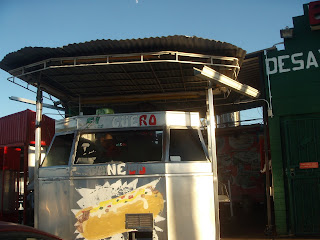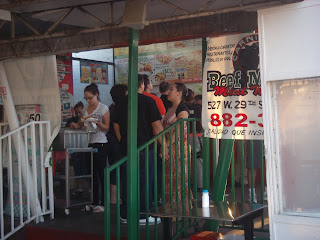
Located 10 miles southwest of Tucson on the Tohono O'odham reservation, Mission San Xavier del Bac is the northern most of the Spanish missions established by Padre Kino in 1692. The church you see today is not the original house of worship built by the famous Jesuit missionary and explorer. His was a simple adobe chapel. Work on the Mission church began in 1783 and was completed in 1797.



Other than its brightly painted walls and ceiling, the inside of the church remains modest. There is no heat or air conditioning to provide a comfortable climate-controlled environment in which to pray. God controls the temperature with the weather. There is no electricity either, other than what is connected by extension cords to a few spotlights and oscillating fans. The pews are hard wooden benches designed to keep you alert and awake during Mass. You won't find padded kneelers either. You kneel on the hard concrete floor. It's amazing that the religious followers of Padre Kino were able to convert anyone to Christianity in such an uncomfortable environment.
But religion isn't about the bricks and sticks that make up the church, its in the soul of each parishioner. You can see it in their celebration of Mass and you can hear it in the voices of the choir. An unamplified group of six with two acoustic guitars, there voices echoed in perfect harmony through the rafters of the church and up to heaven.
Whether you are Catholic, or not, celebrating Mass at Mission San Xavier del Bac is a unique experience and should be on your to do list.
Note: You won't find the Rosary Guild selling donuts and other baked goods after Mass at Mission San Xavier del Bac. Instead you'll find members of the Tohono O'odham community in front of the church selling fresh-made Indian Fry Bread. Choose from sweet varieties topped with cinnamon or powdered sugar, or try a meal-size taco topped with beans, red or green shredded beef, cheese, lettuce and tomatoes. Thank God for fried food. Yum!




















